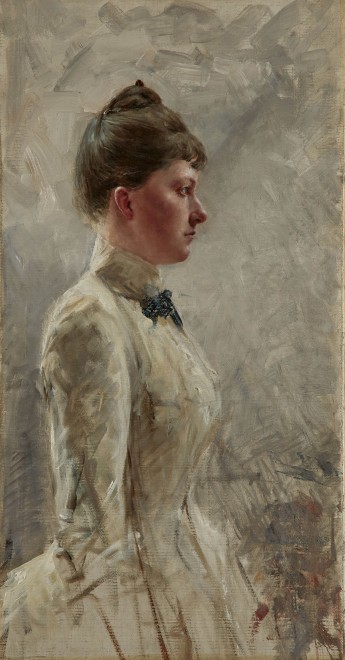Provenance
Konrad and Marie Widter (née Engelhart), Vienna;
Wolfgang Widter (director of the Schwechat brewery), Vienna, 1945;
by descent in the family, Private collection, Vienna
Josef Engelhart (figs. 1a-b) was a leading figure in the lively art world of turn of the century
Vienna. He was both a painter and a sculptor as well as an illustrator and chronicler of the city’s
life. He studied in the art academies of Vienna and Munich (1883-87) and travelled widely
through Europe and also to Egypt. He was one of the original members of the Vienna Secession
founded in 1897 by a group of artists, designers, and architects, including Gustav Klimt, Kolomon
Moser, and Josef Hoffmann, who in opposition to the prevailing conservatism of the city’s art
institutions sought to introduce new artistic trends like French Impressionism and present their
own inventive and varied styles. While some of the other founding members eventually broke
away, Engelhardt remained steadfast and was President of the Secession from 1899-1900 and
again from 1910-11. Although he did produce some works in the decorative, patterned style of
Klimt, like those for the frieze shown at the St. Louis World’s Fair in 1904 (figs. 2a-f), and
occasionally depicted historical or literary figures, like Salome (fig. 3), or painted portraits of
well-known personalities, like the opera singer Richard Mayr (figs. 4a-c), Engelhart was best
known as the König der Strasse (King of the Street), for his vivid studies of Vienna’s street life –
both the everyday characters of high and low society and the political and social activities that he
observed (figs. 5a-f). During the First World War, even though he was in fifties, Engelhart served
on the eastern and Italian fronts as an official war artist for the Imperial War Press Bureau and
chronicled in detail some of the tragic events he witnessed (fig. 6).
As with Klimt and so many of the other Viennese artists of his period, Engelhart’s chief interest
was women. He did both formal portraits (figs. 7a-d) and more sketchy studies (figs. 8a-d). In all
he displayed, as here, great attention to the fabric and texture of their garments. Given the
provenance of this rather noble looking woman shown in profile, one wonders if it may represent
the painter’s wife.
